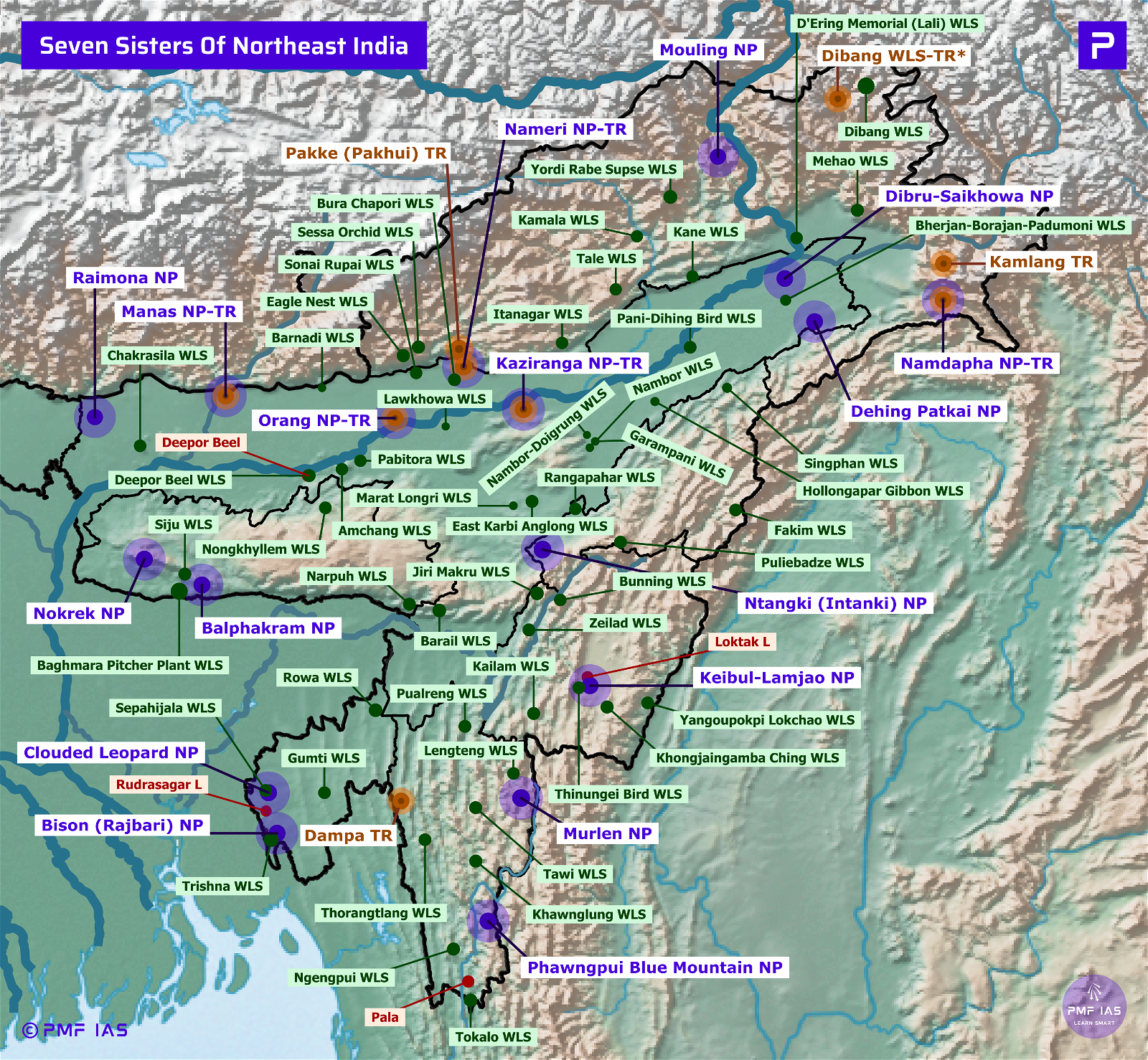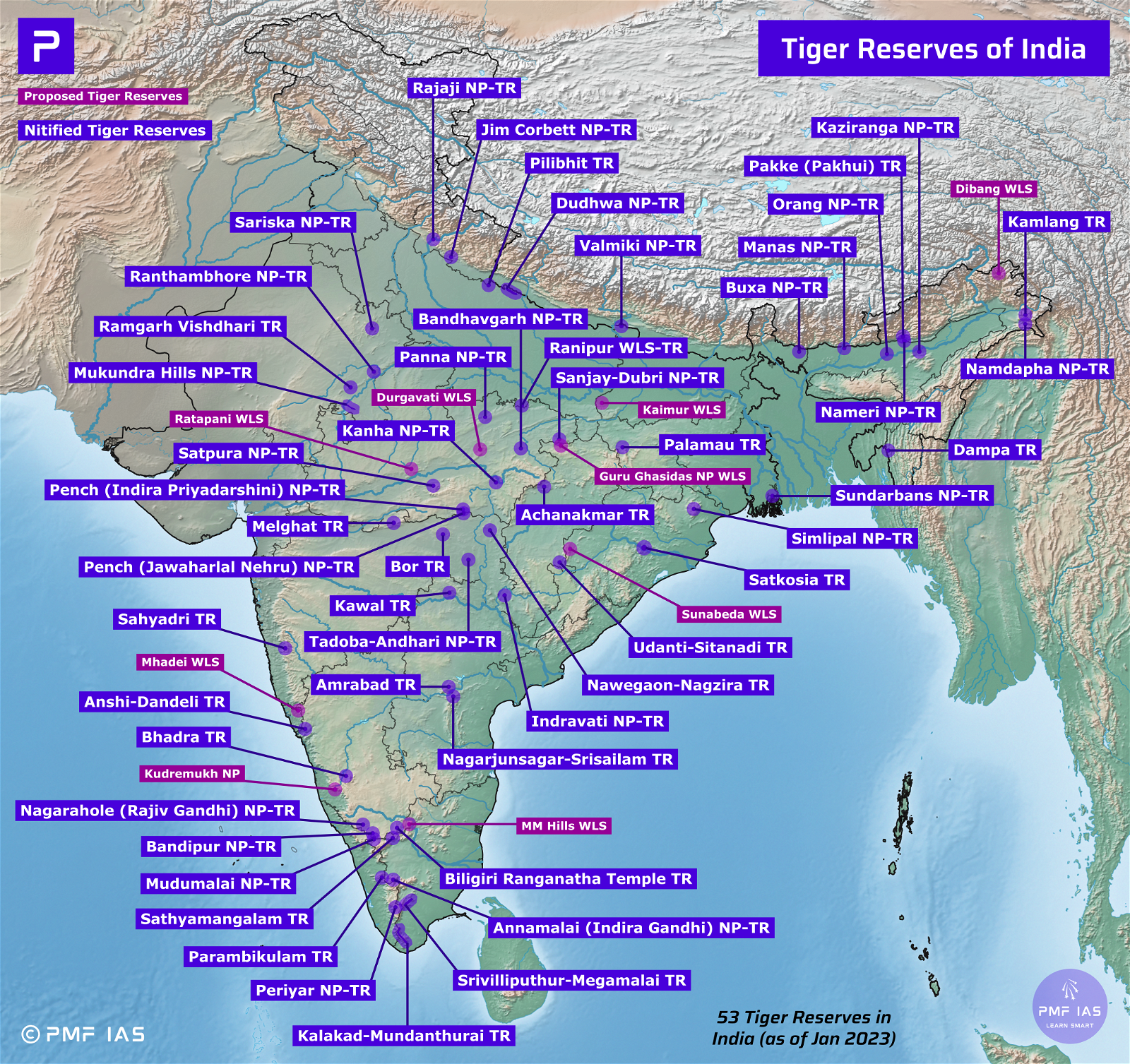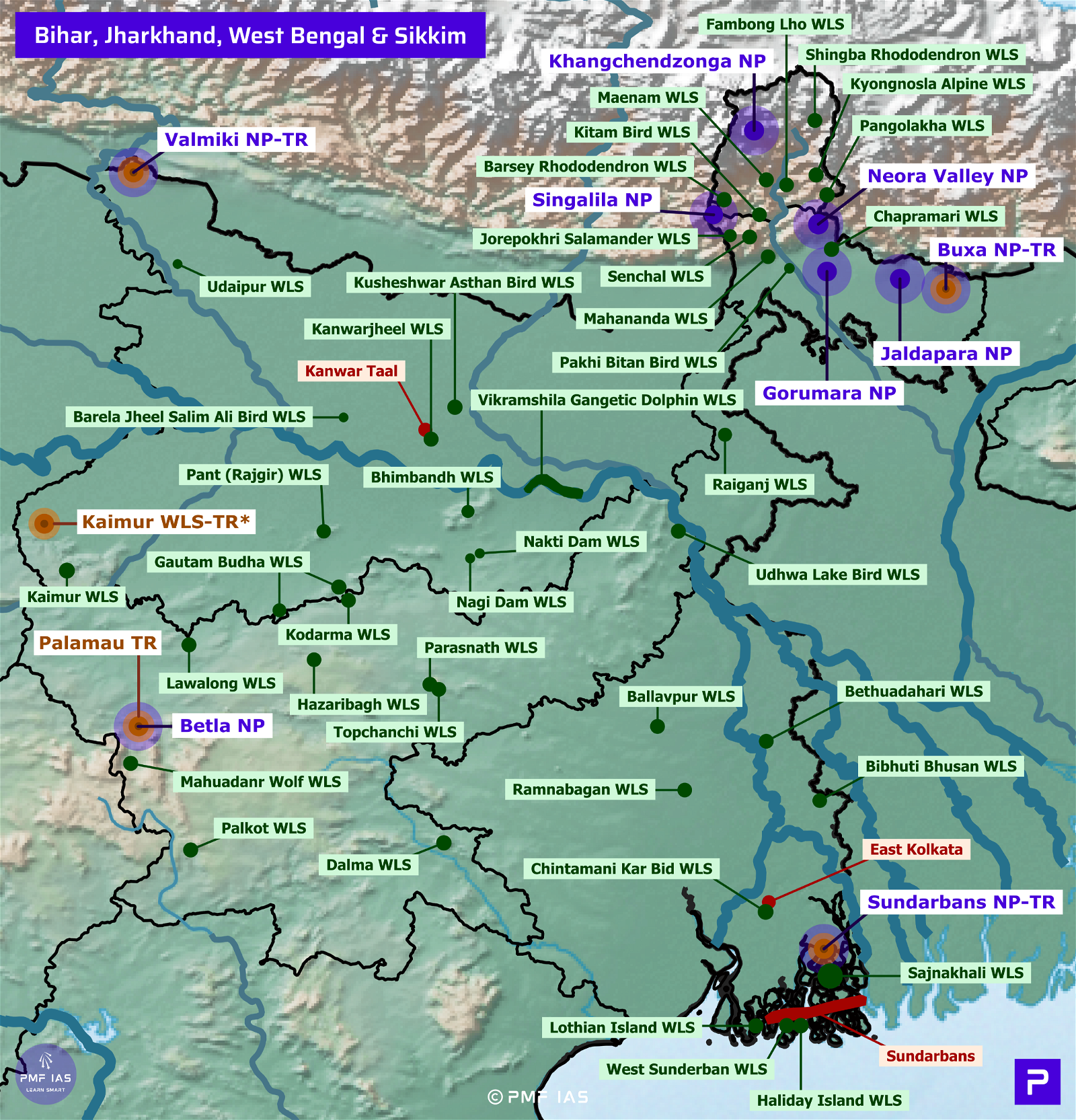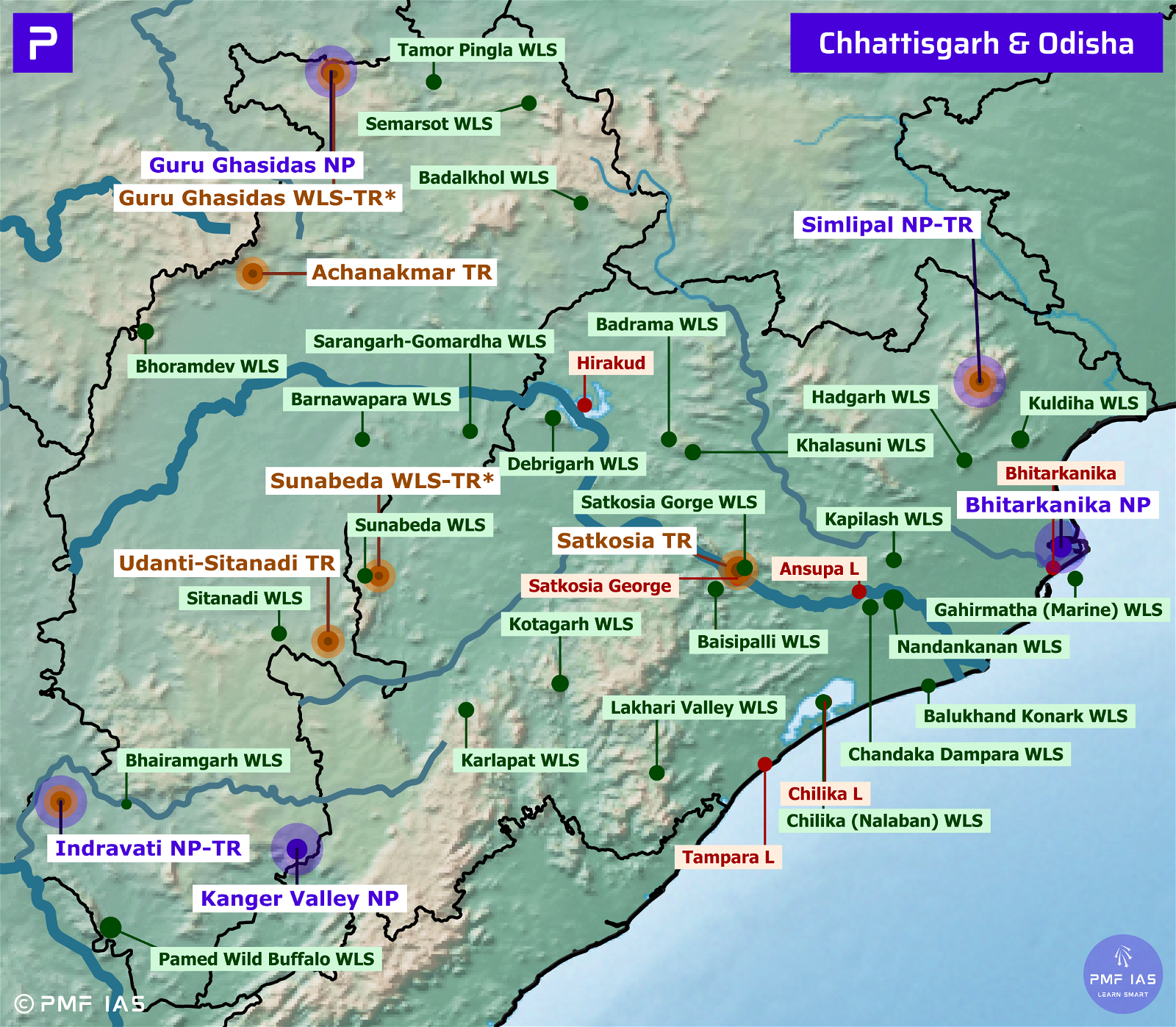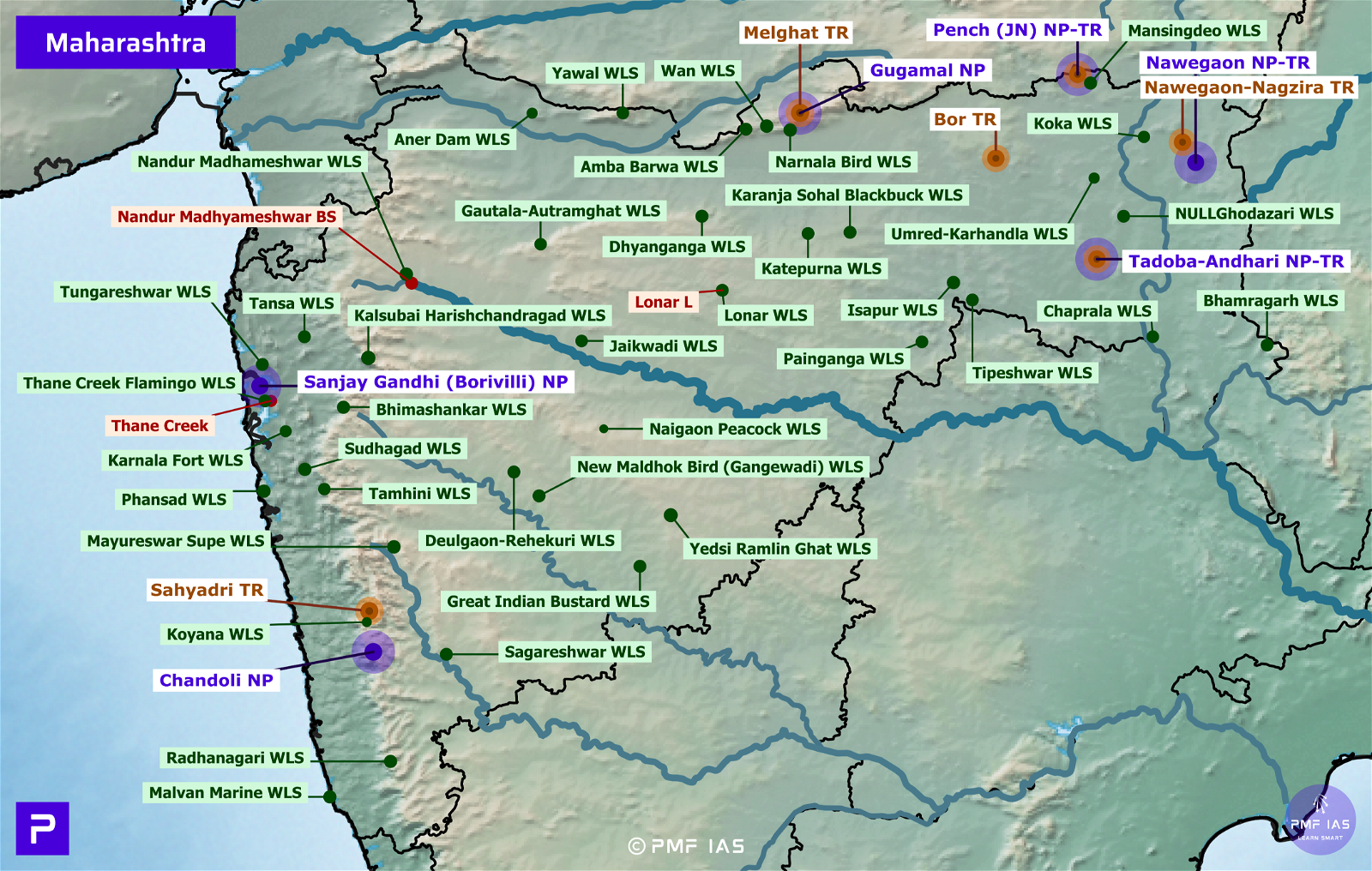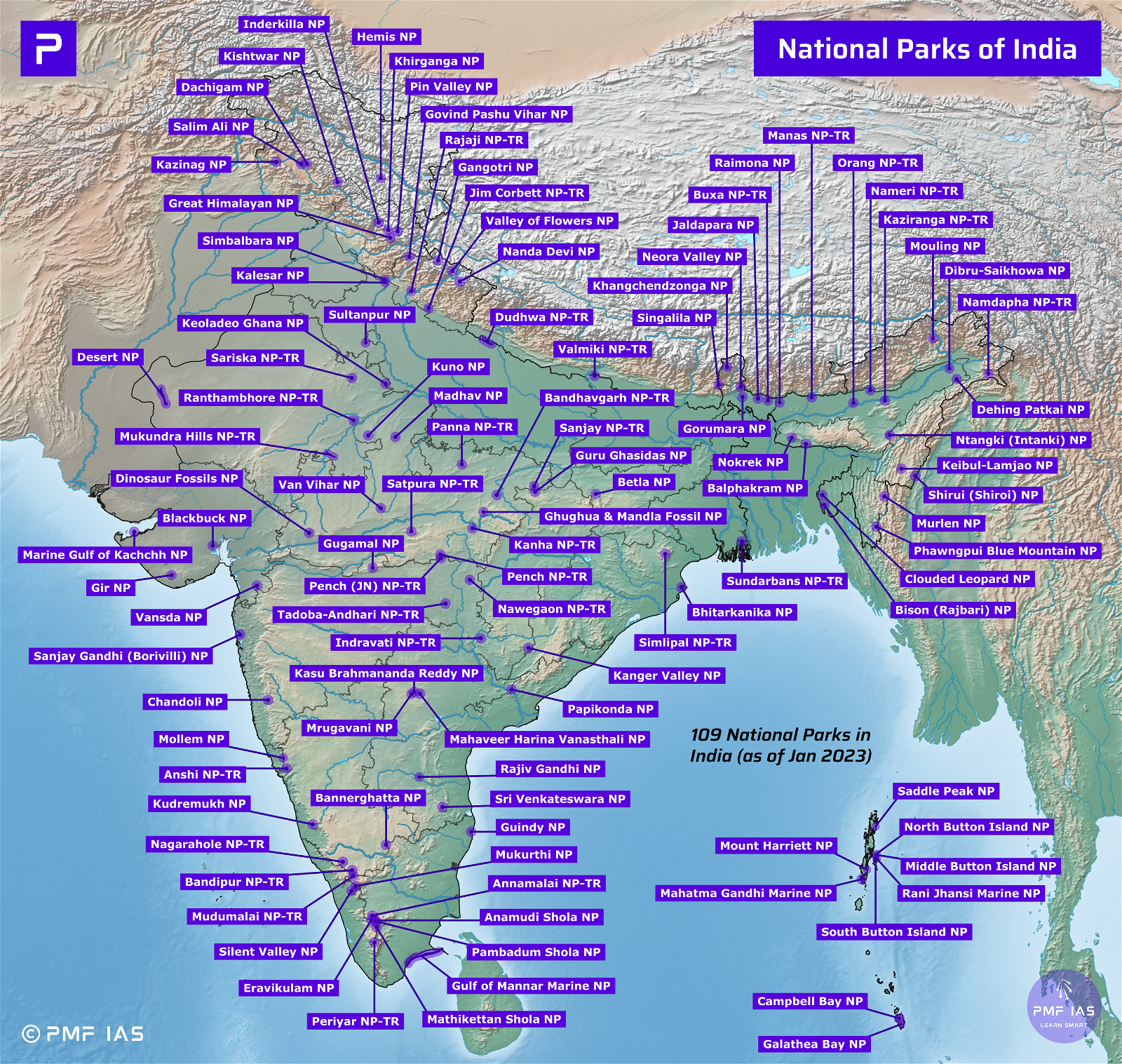
Biodiversity Heritage Sites (BHS) of India (36 Biodiversity Heritage Sites in India in 2023)
Subscribe to Never Miss an Important Update! Assured Discounts on New Products!
Must Join PMF IAS Telegram Channel & PMF IAS History Telegram Channel
Last updated on April 25, 2024 11:22 AM
Biodiversity Heritage Site (BHS)
Biodiversity Heritage Sites are well-defined areas that are unique and ecologically fragile ecosystems (terrestrial, coastal, marine, inland waters) having rich biodiversity comprising of any one or more of the following components:
-
- Species richness
- High endemism
- Presence of rare and threatened species, keystone species, and species of evolutionary significance
- Presence of wild ancestors of domestic/cultivated species
- Past pre-eminence of biological components represented by fossil beds
- Areas with significant cultural, ethical or aesthetic values important for the maintenance of cultural diversity
- Under Section 37 of the Biological Diversity Act, 2002 (BDA), the State Government in consultation with local bodies may notify areas of biodiversity importance as Biodiversity Heritage Sites (BHS). Declaration of an area as BHS does not put any restriction on the prevailing practices and usages of the local communities. Because the purpose of BHS is to enhance the quality of life of the local communities through conservation measures.
Biodiversity Heritage Sites (BHS) of India (36 Biodiversity Heritage Sites in 2023)
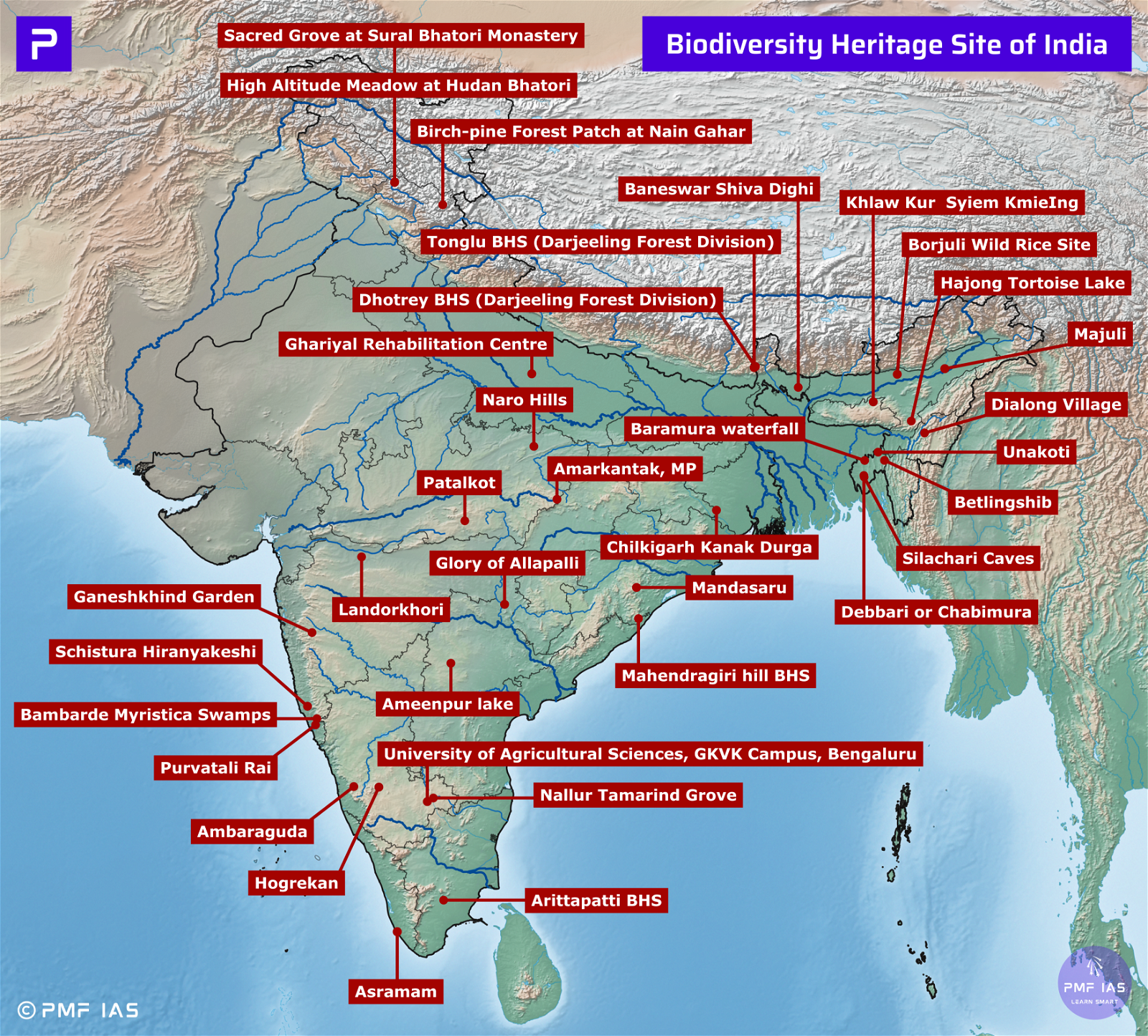
Assam
Majuli (216217 acers)
- It is world’s largest river island formed by the Brahmaputra River in the south and the Kherkutia Xuti, a branch of Brahmaputra, joined by the Subansiri River in the north. It is known for neo-Vaishnavite monasteries and tribal communities (e.g. Mishing, Deoris, & Kacharis).
Hajong Tortoise Lake (1302 acers)
- It is located in the Langting-Mupa reserve forest in the North Cachar Hills district of Assam. It is the only natural tortoise habitat in Assam.
- It is home to the freshwater Black Softshell Turtle (CR) and the Indian Peacock Softshell Turtle (EN). Tortoise Festival is organised every year on bank of the Hajong lake.
- Fauna: Chinese Pangolin, Clouded Leopard, Leopard, Asiatic Black Bear, Fishing Cat, Sambar, Western Hoolock Gibbon, Capped Langur, Wreathed Hornbill etc.
Borjuli Wild Rice (1 acers)
- Located in Sonitpur within a private tea estate. It is famous for Borjuli Wild Rice (Oryza rufipogon) commonly known as Brown Bread Rice.
Brown Bread Rice
|
Goa
Purvatali Rai (2 acers)
- This sacred grove dedicated to the folk deity Betal is Goa’s 1st Biodiversity Heritage Site.
Himachal Pradesh
Sacred Grove at Sural Bhatori Monastery (7 acers)
- It is in Pangi Valley and is famous for Himalayan birch (or bhojpatra) trees. It is a deciduous tree native to the Western Himalayas whose paper-like bark is used for writing. It has numerous other wildflowers and herbs.
High Altitude Meadow at Hudan Bhatori (108 acers)
- It has many valuable species of flora and fauna.
Birch-pine Forest Patch at Nain Gahar (94 acers)
- Its main trees are Himalayan birch (or bhojpatra) and Blue Pine (also called Himalayan White Pine & Bhutan Pine). It also supports many medicinal plants like Sea Buckthorn.
|
Karnataka
Nallur Tamarind Grove (54 acers)
- It is India’s first Biodiversity Heritage Site. It is a relic of the Chola Dynasty with a group of old tamarind plants standing like ageless sentinels.
Hogrekan (2508 acers)
- It is an area with Shola vegetation that serves as a “Wildlife Corridor” between Kudremukha and Bhadra WLS.
University of Agricultural Sciences, Bengaluru (413 acers)
- One of the greenest areas in Bengaluru, it is a critical repository of various forms of flora and fauna.
Ambaraguda (9531 acers)
- It is an area of Shola vegetation located between Sharavathi and Someshwara WLS.
Kerala
Asramam (142 acers)
- It is Kerala’s 1st Biodiversity Heritage Site. It hosts rare varieties of Mangrove species and critically endangered Poriyal (Syzygium travancoricum) trees. Ashtamudi Lake (a Ramsar Site), the second largest lake of Kerala, is within this heritage site.
Madhya Pradesh
Naro Hills (494 acers)
- It has unique and varied geology that supports a large number of ecosystems and species of flora and fauna
Amarkantak (18981 acers)
- It the highest peak of the Maikal range which links the Vindhyachal and Satpura ranges. It is a major watershed of peninsular India.
- It is source of three major river systems: Narmada, Son, and Johilla. It is primarily a religious place and is known as Treethraj (the king of pilgrimages).
Patalkot (20677 acers)
- This valley is home to tribal culture and enormous herbal wealth including rare Bryophytes and Pteridophytes.
Maharashtra
Glory of Allapalli (15 acers)
- It is a reserved forest having biological, ethnical and historical values.
Bambarde Myristica Swamps (6 acers)
- It is one of the three localities of India where Myristica Swamps are found.
|
Ganeshkhind Garden (82 acers)
- The garden is one of the oldest in India, with some trees being planted by the Peshwas, especially the mango trees.
Landorkhori (119 acers)
- Landorkhori in Jalgaon is an abode of peacocks.
Schistura Hiranyakeshi (5 acers)
- It is famous for Schistura hiranyakeshi, a freshwater fish endemic to the Western Ghats, discovered in 2020. The species was named after the river Hiranyakeshi.
|
Manipur
- Dialong Village (2805 acers)
Meghalaya
Khlaw Kur Syiem KmieIng (40 acers)
- It is also an old Sacred Grove with monoliths, religious spots and rich biodiversity.
Odisha
Mandasaru (1305 acers)
- 1st Biodiversity Heritage Site of Odisha which is an adobe of plants, animals and fungi species.
Mahendragiri hill Biodiversity Heritage Site (10502 acers)
- It is India’s latest Biodiversity Heritage Site (it is the 36th Biodiversity Heritage Site of India) and Odisha’s 2nd BHS. It comprises two reserve forests – Idongiri and Mahendra Reserve Forests of Gajapati district.
- With an increase in altitude, it demonstrates microclimatic conditions like tropical shola, tropical semievergreen, tropical moist-deciduous & tropical dry deciduous.
- The hill ecosystem is a transitional zone between the flora and fauna of the Western Ghats and the Himalayan biogeographic zones making the region an ecological estuary of genetic diversities. It is a critical habitat of the Saora (Saura) and Kondh tribe.
- The ancient temples of Kunti, Shima, Arjuna and Yudhisthir at Mahendragiri (protected monuments under the Ancient Monument and Archaeological sites Act 1958) provide a sacred and holy background to the region.
Tamil Nadu
Arittapatti Biodiversity Heritage Site (477 acers)
- It is Tamil Nadu’s 1st BHS. It has rich biological and historical significance with the presence of around 250 bird species including 3 flagship Raptor species: Laggar Falcon (NT), Shaheen Falcon (LC), Bonelli’s Eagle (LC) and wildlife like Indian Pangolin (EN), and Slender Loris (NT).
- It is surrounded by a chain of seven hillocks or inselbergs that serve as a watershed, charging 72 lakes, 200 natural springs and 3 check dams. Anaikondan Lake (built during the by Pandiyan kings in 16th century) is one among them.
- Several megalithic structures, rock-cut temples, Tamil Brahmi inscriptions and Jain beds add to the historical significance of the region.
Telangana
Ameenpur Lake (93 acers)
- It is the 1st water body in India to be designated as a BHS and 1st biodiversity site to be approved in an urban area.
Tripura
Baramura Waterfall (371 acers)
- It is the highest natural waterfall in Tripura. It is a critical habitat for rare wildlife, flora and aquatic fauna.
Unakoti (99 acers)
- It has many sacred rock carvings and trees. It is a Shaiva pilgrimage site and is known as the ‘Angkor Wat of the North-East’.
Silachari Caves (247 acers)
- It is the only natural cave in Tripura. It is a habitat for several threatened cave bat species, flora, fauna and aquatic species. It has ethno-religious and cultural significance.
Debbari or Chabimura (531 acers)
- This river forest ecosystem is a habitat for threatened plants of Tripura like the Dhup tree (of the incense tree family) and cane resources of India. It breeding habitat for threatened fishes and fauna of Tripura.
Betlingshib & its surroundings (865 acers)
- It is the highest peak of Tripura and has the highest floristic diversity in Tripura.
- Conservation: It is habitat for several red listed flora and fauna. It is a medicinal plant conservation area.
- Cultural significance: Its diverse agro-ecosystem model.
- Aesthetic value: Its provides view of Mizoram and Chittagon hill tracts, hills of Jampui, and orange orchards.
Uttar Pradesh
Ghariyal Rehabilitation Centre (25 acers)
- It is part of the Kukrail Reserve Forest, an urban forest created in the 1950s as a plantation forest. It is a captive breeding and conservation centre for freshwater Gharials (CR) (also called gavial or fish-eating crocodiles).
West Bengal
Tonglu BHS under the Darjeeling Forest Division (568 acers)
- It is a Medicinal Plant Conservation area.
Dhotrey BHS under the Darjeeling Forest Division (445 acers)
- It is a Medicinal Plant Conservation area.
Chilkigarh Kanak Durga (56 acers)
- It is West Bengal’s largest sacred grove. It is a remnant forest with traditional beliefs and taboos of local inhabitants and rich in biodiversity covering.
Baneswar Shiva Dighi (1.65 acers)
- Located in Coochbehar, it offers refuge to the Black Softshell Turtle (CR). It is listed under Appendix I of CITES.
Last updated on April 25, 2024 11:22 AM






